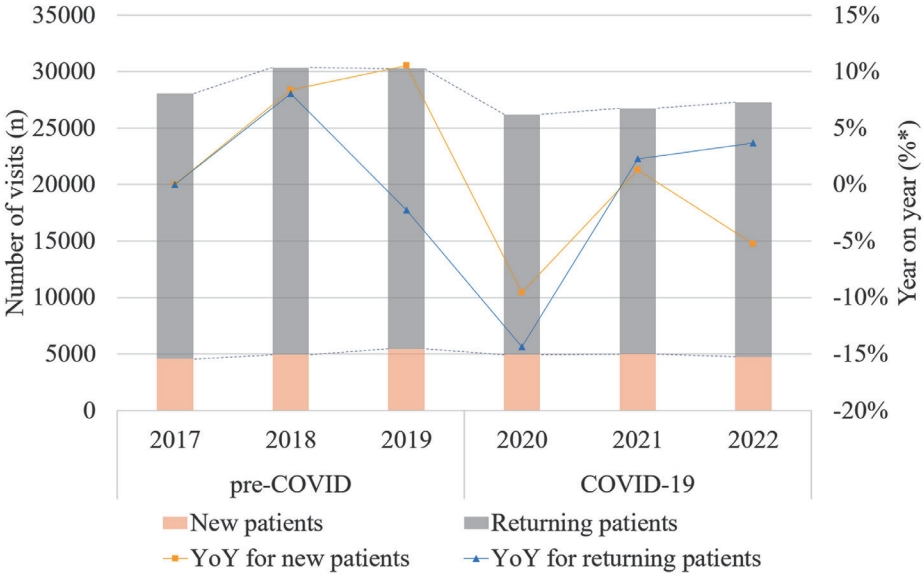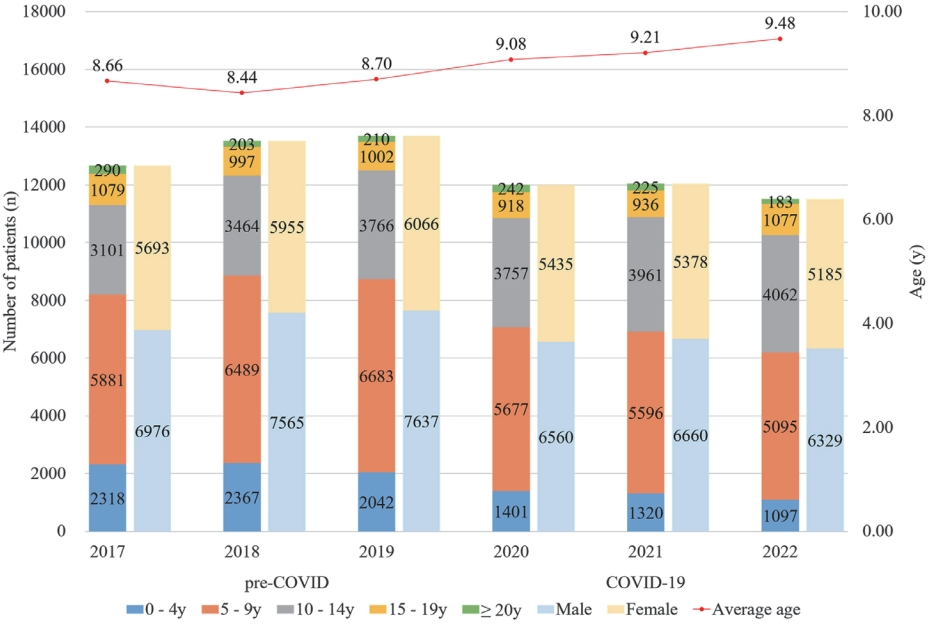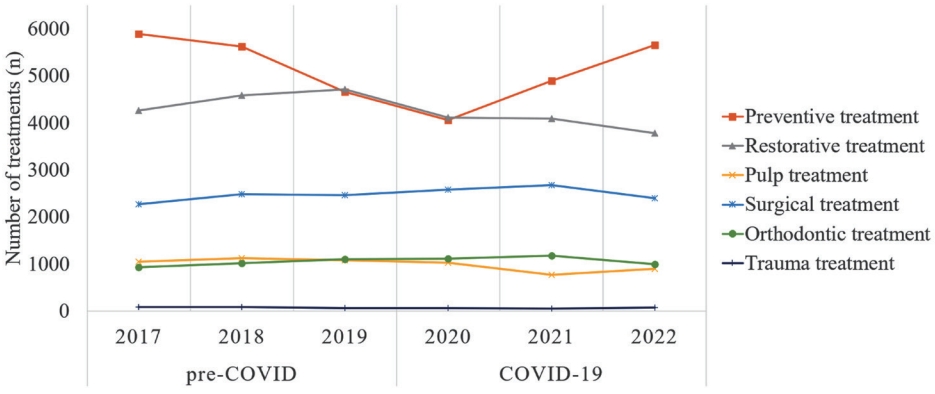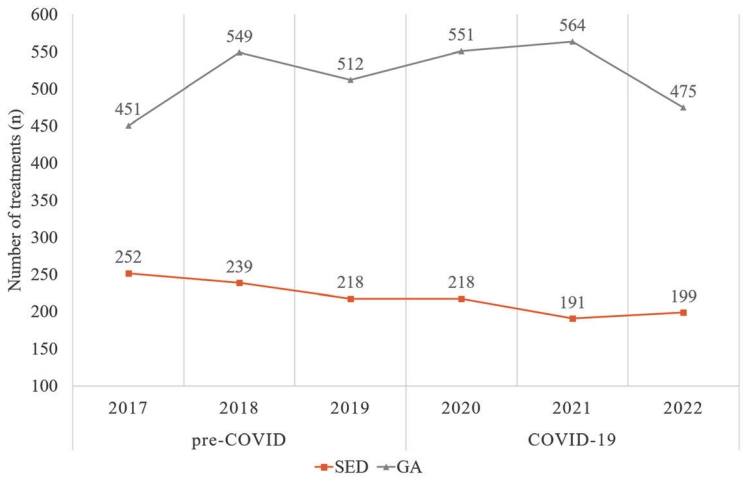1. Phelan AL, Katz R, Gostin LO : The novel coronavirus originating in Wuhan, China: challenges for global health governance.
JAMA, 323:709-710, 2020.


2. Mahase E : China coronavirus: WHO declares international emergency as death toll exceeds 200.
BMJ, 368:m408, 2020.


3. Baloch S, Baloch MA, Zheng T, Pei X : The coronavirus disease 2019 (COVID-19) pandemic.
Tohoku J Exp Med, 250:271-278, 2020.


4. Wise J : Covid-19: WHO declares end of global health emergency.
BMJ, 381:1041, 2023.


5. Torner N : The end of COVID-19 Public Health Emergency of International Concern (PHEIC): and now what?
Vacunas, 2023 May 18. doi: 10.1016/j.vacun. 2023.05.002. Online ahead of print

7. An N, Yue L, Zhao B : Droplets and aerosols in dental clinics and prevention and control measures of infection.
Zhonghua Kou Qiang Yi Xue Za Zhi, 55:223-228, 2020.

8. World Health Organization : Considerations for the provision of essential oral health services in the context of COVID-19: interim guidance. 3 August 2020. Available from URL:
https://apps.who.int/iris/handle/10665/333625 (Accessed on August 7, 2023)
9. Kim J : Guidelines for dental clinic infection prevention during COVID-19 pandemic. J Korean Acad Dent Admin, 8:1-7, 2020.
11. Guo H, Zhou Y, Liu X, Tan J : The impact of the COVID-19 epidemic on the utilization of emergency dental services.
Dent Sci, 15:564-567, 2020.



13. Schwendicke F, Krois J, Gomez J : Impact of SARSCoV2 (Covid-19) on dental practices: Economic analysis.
J Dent, 99:103387, 2020.



16. Son D, Kim J : Analysis of the association between COVID-19 and dental visits in children and adolescents through big data.
J Korean Acad Pediatr Dent, 48:324-332, 2021.

17. Kim JH, Jung HI, Kim IH, Lee J, Kang CM : Impact of coronavirus disease 2019 on dental service utilization of Korean children and adolescents.
J Korean Acad Pediatr Dent, 49:206-216, 2022.

18. Son D, Lee Y, Kim J : Impact of COVID-19 on dental trauma in Korea.
J Korean Acad Pediatr Dent, 49:76-84, 2022.

19. Son YJ, Hyun HK, Kim YJ, Kim JW, Lee SH, Kim CC, Hahn SH, Jang KT : The changes in practice patterns for the last 8 years (2001-2008) in the department of pediatric dentistry, Seoul National University Dental Hospital. J Korean Acad Pediatr Dent, 37:97-101, 2010.
20. Seo M, Song JS, Shin TJ, Hyun HK, Kim JW, Jang KT, Lee SH, Kim YJ : Chronological trends in practice pattern of department of pediatric dentistry: 2006-2015.
J Korean Acad Pediatr Dent, 45:215-224, 2018.

22. Nguyen KH, Levisohn A, McChesney C, Vasudevan L, Bednarczyk RA, Corlin L : Disparities in child and adolescent COVID-19 vaccination coverage and parental intent toward vaccinations for their children and adolescents.
Ann Med, 55:2232818, 2023.



23. Jun KS : A Qualitative Study on the COVID-19 Experience of the vulnerable Children & Adolescents and Daily Recovery during Post-COVID-19. Korean J Urban Stud, 23:263-315, 2023.
24. Choi JH : The Relationship between Daily Life Changes and Oral Symptoms experienced by Korean Adolescents due to the COVID-19 Pandemic: The 17th(2021) Korea Youth Risk Behavior Survey.
JKAIS, 23:280-286, 2022.

25. Kim K, Kim S, Lee D, Park CY : Impacts of social distancing policy and vaccination during the COVID-19 pandemic in the Republic of Korea.
J Econ Dyn Control, 150:104642, 2023.



26. Choi J : The effects of COVID-19 pandemic on the mental health of the general public and children and adolescents and supporting measures.
J Korean Neuropsychiatr Assoc, 60:2-10, 2021.


27. Choi YJ, Lee SG : Changes in the Policy of the National Health Insurance of Korea during the COVID-19 Pandemic.
HIRA Res, 3:92-101, 2023.

28. Kim SH, Park CM, Kim SH, Oh JY, Kim HM : Trends in Transition of Major CountriesŌĆÖ Epidemic Control Systems in Response to Omicron Variant Spread. PHWR, 15:632-637, 2022.
29. Kim T : The impact of working hours on pregnancy intention in childbearing-age women in Korea, the country with the worldŌĆÖs lowest fertility rate.
PLoS ONE, 18:E0288697, 2023.



30. Lim YW, Chae YK, Lee KE, Nam OH, Lee H, Choi SC, Kim MS : A Study on the Current State of Pediatric Dentists and the Adequacy of Supply and Demand Based on Covered Services.
J Korean Acad Pediatr Dent, 50:360-372, 2023.


31. Krishna Shree CH, Nagar P, Pooja HR, Mascarenhas AN : Parental knowledge, attitude, and perception toward dental treatment during COVID-19 pandemic: A cross-sectional survey.
SRM J Res Dent Sci, 14:28-32, 2023.

32. Lee H, Park S, Shin J, Jeong T, Lee E : The Distribution of Pediatric Patients According to Accessibility to Dental Facilities in Pusan National University Dental Hospital.
J Korean Acad Pediatr Dent, 49:368-378, 2022.


33. An H, Kim S, Choi N : Trend Analysis and Prediction of the Number of Births and the Number of Outpatients using Time Series Analysis.
J Korean Acad Pediatr Dent, 49:274-284, 2022.


34. Kim N, Kim IH, Song JS, Lee J, Kang CM : National Oral Health Screening for Infants and Children: A Survey on its Perception, Requirements and Accuracy of Parents and Dentists.
J Korean Acad Pediatr Dent, 49:217-227, 2022.

36. Kim KL, Joeng YS : A Study on the Direction of Distance Learning in the Post-pandemic Era.
J Educ Stud, 54:1-19, 2023.

38. Cho J, Oh S, Kim S, Kim N, Shin Y, Cho H, Yoon Y : COVID-19 Mobility Data Collection of Seoul, South Korea. Arxiv, 2006:08365, 2020.
39. Koo YH, Hyun HK, Kim JW, Jang KT, Lee SH, Han SH, Kim CC : Characteristics of orthodontic patients in department of pediatric dentistry, Seoul National University Dental Hospital. J Korean Acad Pediatr Dent, 36:550-555, 2009.
40. Cho Y, Kim S, Choi N : Characteristics of orthodontic patients in department of pediatric dentistry, Chonnam national university dental hospital.
J Korean Acad Pediatr Dent, 42:136-143, 2015.

41. Saccomanno S, Antonini G, DŌĆÖAlatri L, DŌĆÖAngeloantonio M, Fiorita A, Deli R : Case report of patients treated with an orthodontic and myofunctional protocol.
Eur J Paediatr Dent, 15(2 Suppl):184-186, 2014.

42. Saccomanno S, Saran S, Guercio E, Mastrapasqua RF, Pirino A, Scoppa F : The influence of the COVID-19 pandemic on orthodontic treatments: a survey analysis.
Dent J, 10:15, 2022.



44. Yilanci H, Demirsoy KK, Canbaz B, Bozkurt S, Sevgi D : Evaluation of the Effect of COVID-19 on Patients Undergoing Orthodontic Treatment.
Med Rec, 5:532-540, 2023.

46. Lyu W, Wehby GL : Effects of the COVID-19 pandemic on childrenŌĆÖs oral health and oral health care use.
J Am Dent Assoc, 153:787-796, 2022.



47. Hopcraft M, Farmer G : Impact of COVID-19 on the provision of paediatric dental care: Analysis of the Australian Child Dental Benefits Schedule.
Community Dent Oral Epidemiol, 49:369-376, 2021.



48. Schulz-Weidner N, Schlenz MA, Kr├żmer N, Boukhobza S, Bekes K : Impact and perspectives of pediatric dental care during the COVID-19 pandemic regarding unvaccinated children: A cross-sectional survey.
Int J Environ Res Public Health, 18:12117, 2021.



49. Acharya S, Singh B, Godhi B, Pandey S : How to deal and learn from the threat of COVID-19 in paediatric dentistry.
Eur J Paediatr Dent, 21:173-175, 2020.

50. Lee MJ, Song JH : Effects of Media Usage and Physical Activity on ChildrenŌĆÖs School Adjustment during the COVID-19 Pandemic: Mediating Roles of ŌĆ£CognitiveŌĆØ and ŌĆ£EmotionalŌĆØ Executive Functions. KJCCEP, 17:171-195, 2023.
51. Han JH, Song JS, Shin TJ, Hyun HK, Kim YJ, Kim JW, Jang KT, Lee SH : A Study on Treatment under General Anesthesia in Pediatric Dentistry at Seoul National University Dental Hospital.
J Korean Acad Pediatr Dent, 45:170-178, 2018.

52. Tewfik K, Peta C, De Giuli MC, Rossini M, Giampaoli G, Covelli C, Burlini D : Impact of Covid-19 pandemic on children with special needs requiring general anaesthesia for the treatment of dental disease: the experience of the Brescia ChildrenŌĆÖs Hospital, Lombardy, Italy.
Eur Arch Paediatr Dent, 24:133-138, 2023.




53. Phadraig CMG, Van Harten MT, Diniz-Freitas M, Posse JL, Faulks D, Dougall A, Dios PD, Daly B : The impact of COVID-19 on access to dental care for people with disabilities: A global survey during the COVID-19 first wave lockdown.
Med Oral Patol Oral Cir Bucal, 26:E770-E777, 2021.


54. Posse JL, van Harten MT, Phadraig CMG, Freitas MD, Faulks D, Dougall A, Daly B, Dios PD : The impact of the first wave of the covid-19 pandemic on providing special care dentistry: A survey for dentists.
Int J Environ Res Public Health, 18:2970, 2021.



55. Checchi V, Bellini P, Bencivenni D, Consolo U : COVID-19 dentistry-related aspects: a literature overview.
Int Dent J, 71:21-26, 2021.


56. Nuvvula S, Mallineni SK : Remote management of dental problems in children during and post the covid-19 pandemic outbreak: A teledentistry approach.
Dent Med Probl, 58:237-241, 2021.


57. Elalouf A, Moran R, Yaron B, Oman M : Pediatric dental emergency visits and treatment during lockdown in the COVID-19 pandemic: a retrospective study.
Int J Environ Res Public Health, 19:3774, 2022.



58. Angelopoulou MV, Seremidi K, Papaioannou W, Gizani S : Impact of the COVID-19 lockdown on the oral health status of paediatric dental patients in Greece.
Int J Paediatr Dent, 33:246-253, 2023.



59. Costa AL, Pereira JL, Franco L, Guinot F : COVID-19 lockdown: impact on oral health-related behaviors and practices of Portuguese and Spanish children.
Int J Environ Res Public Health, 19:16004, 2022.



60. Gernandt S, Perez A, Courvoisier DS, Scolozzi P : The lockdown effect: The impact of the COVID-19-related confinement on the nature of dental emergencies and the number of patients seen at the Geneva university hospitalŌĆÖs dental clinic.
J Stomatol Oral Maxillofac Surg, 123:E229-E232, 2022.



61. Sinjari B, Rexhepi I, Santilli M, D Addazio G, Chiacchiaretta P, Di Carlo P, Caputi S : The impact of COVID-19 related lockdown on dental practice in Central Italy - outcomes of a survey.
Int J Environ Res Public Health, 17:5780, 2020.



62. Pereira LJ, Pereira CV, Murata RM, Pardi V, Pereira-Dourado SM : Biological and social aspects of Coronavirus Disease 2019 (COVID-19) related to oral health.
Braz Oral Res, 34:E041, 2020.


63. Rajput A, Kumar U, Sinha N, Kumar G, Vashisht R, Gauba K, Kanase A : Emergency pain management of untreated pulpitis during COVID-19 lockdown by telephonic communication.
World J Dent, 13:358-361, 2022.



















 PDF Links
PDF Links PubReader
PubReader ePub Link
ePub Link Full text via DOI
Full text via DOI Download Citation
Download Citation Print
Print



